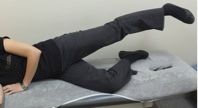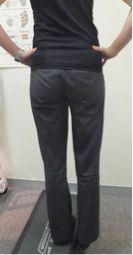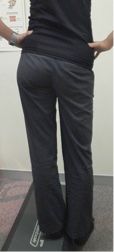Glute Strength Exercises for Triathletes to Prevent Running Injuries
Strengthening your glutes and getting them to work, or activate correctly whilst running is one of the most important factors in preventing running injuries. If your glutes aren’t working properly you can predispose yourself to an overuse injury such as ITB Friction Syndrome, shin splints and stress

Strengthening your glutes and getting them to work, or activate correctly whilst running is one of the most important factors in preventing running injuries. If your glutes aren’t working properly you can predispose yourself to an overuse injury such as ITB Friction Syndrome, shin splints and stress fractures. Stronger glutes will enable you to maintain your form and technique for longer whilst running. This will not only help to prevent injury but will enable you to run faster for longer.
Initially it is best to start glute strengthening in a non-weight bearing position, to enable you to get the muscles firing and wake them up! You can also begin strengthening in this way if you have an injury that prevents weight bearing. Following this you want to add exercises that put your body into positions that are more functional. Basically a position that replicates running. This will ensure that the muscles know how to work when you are actually running which is extremely important!!!
Non Weight bearing exercise
Side hip abduction
Great non-weight bearing exercise to get your Glute Med working.
- Begin by lying on your side with your knee extended and hip in neutral.
- Raise your top leg up to approx 30deg.
- Ensure that you don’t flex the hip at all during the exercise. If you do you will be working hip flexors more than your glutes!
NB: An article by Distefano et al (2009) found this exercise to be the most effective in getting Glute Med to activate.
15 reps x 3 sets

Weight bearing (functional exercise)
Single leg squat
Great exercise if done well to strengthen Glute Med.

- Start with your hands on your hips.
- As you balance on one leg ensure that your opposite hip doesn’t drop – your hands should stay level.
- Doing this exercise in front on a mirror is a great idea so you can see exactly what you look like!
- Making sure that your hands stay level slowly bend through your standing leg and perform a Single Leg Squat.
- Don’t let your knee move inwards as you bend your knee – keep it lined up over your second and third toes.
Not only does this exercise strengthen Glute med but Glute Max as well! Glute Max is a power muscle, which is used to help propel us forward when running. Two for the price of one with this exercise.
10-15 reps x 3 sets
NB: (Ensure all repetitions are done with correct technique. Reduce the amount if you are unable to maintain technique)
Glute med at Wall
This is a personal favorite of mine. Position is everything with this exercise.

- You need to be standing next to a wall side on.
- The Glute you will be working will be your outside leg.
- Bend your inside knee and place the side of that knee on the wall.
- Ensure nothing else is touching the wall (don’t let your hips rest on the wall!!).
- Make sure your standing knee is slightly softened (not locked into full extension).
- Gently then push your side knee into the wall and hold for 30sec.
- What you should feel is a burning sensation around the outside of your standing hip – Glute Med working!
3 reps of 30 second holds
This exercise is great because you can progress it by adding single leg squat with your standing leg!
Pelvic Drop/hip hitch
Standing on a step side on with your standing foot on the edge of the step and your other leg in the air off the step. This exercise involves keeping both knees and hips in neutral and dropping your foot (which is off the side of the step) down towards the floor and then slowly bring it back up to level with the other foot. Again with this exercise you are working the glute on your standing leg.
15 reps x 3 sets


References:
Boren, K., Conrey, C., Coguic, J., Paprocki, L., Voight, M., Robinson, T.K. (2011) Electromyographic Analysis of Gluteus Medius and Gluteus Maximus during rehabilitation. The International Journal of Sports Physical Therapy. 6(3)206-223
Distefano, L., Blackburn, J.T., Marshall, S. & Padua, D. (2009) Gluteal Muscle Activation During Common Therapeutic Exercises. Journal of Orthopaedic and Sports Physical Therapy. 39(7) 532-540


Comments ()